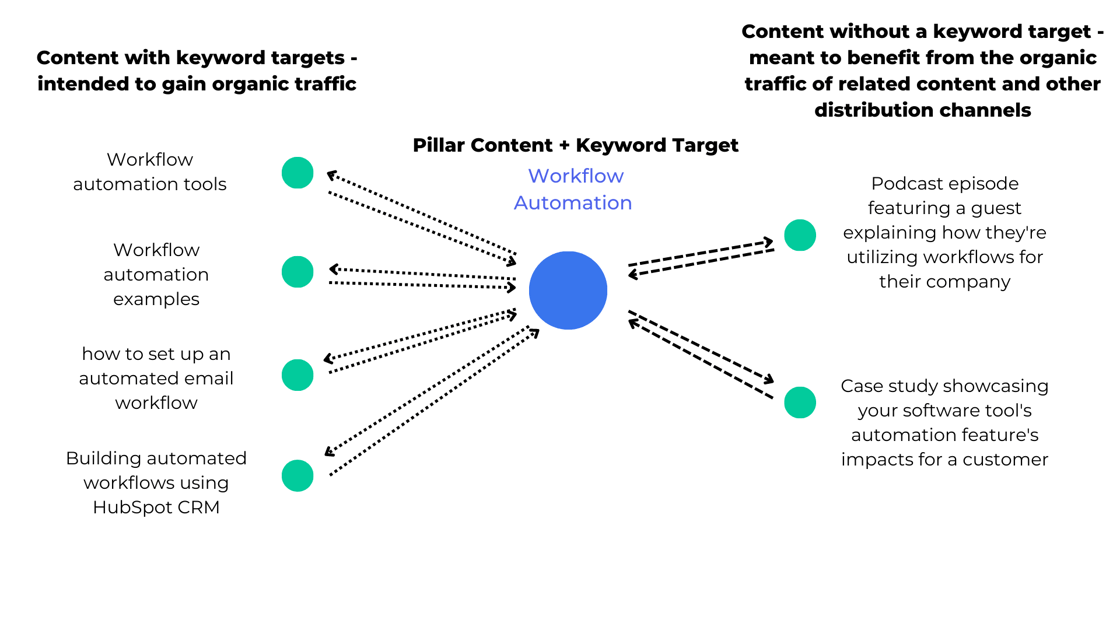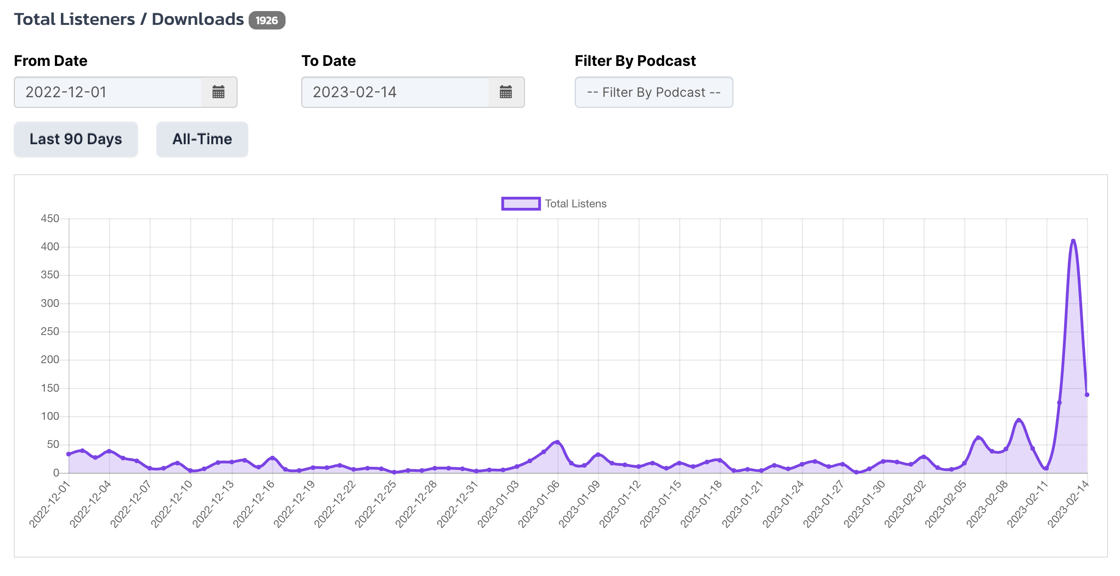6 Ways to Extend the Lifespan of Your Video Content
Video content is a big investment so here are a few ways to ensure people continue seeing it.
I think we can agree that video content feels like it’s all the rage right now because it plays well with most audiences and most platforms.
And that makes sense because it gives people:
An ability to see your face(s) and hear your voice(s) = impactful connection
Visual stimulation in social feeds and within written content = noticed differentiation and more time spent with content (even if it’s only fractions of seconds)
There is still a relative barrier of entry to producing high-er quality video content (storyboard + prompts or scripts + camera + recording & editing software + vetting for mess-ups/accuracy, then distributing it across multiple channels)
HOWEVER, the benefits of differentiation and barriers to entry often come with additional production costs - leaving content marketers understandably frustrated when a video asset’s lifecycle feels too short.
So, this month, we're addressing 6 ways to extend the lifespan and reach of your video content.
1. Produce optimized written content (using SEO) and embed your videos in it
If you want to give your video content everlasting life, combine it with your SEO-focused articles.
For example:
Folks that search for queries around “how to use LinkedIn Ads as a B2B SaaS company” will be stoked to find a blog article that talks about how to set up their own ads with your guidance.
What’ll impress them even more, is that video of:
You building out a LinkedIn campaign in front of them
You talking about how to structure LI Ads or your favorite current LI Ad types on your or someone else’s podcast
You showing off how your social media or ad-related product makes it easier to manage their own LI ads
As new users come across that optimized article, guide, or blog they’ll be given the opportunity to watch that relevant video right there, expanding the reach of your investment without continuously running paid ads to it.
Connecting your videos to related search intent also makes you less reliant on people navigating away from the page they landed on to another subfolder to watch your webinars or podcasts, etc.
The other reason for doing this has to do with how Google treats video content that displays on the SERPs.
Often, if your video appears within a SERP feature, like a video carousel, or in the videos tab, it’ll take the user to the optimized blog post that you’ve embedded that video on instead of directly to wherever that video is hosted (like YouTube).
The written content gives Google context clues around what the video is about - and in turn, the search engine feels that the page overall best matching search intent that’s associated with the video is what the user ultimately wants (see below for keyword “how to set up LI ads”).
2. Improve your clusters to ensure that your webinars/podcasts etc. are a part of the educational curriculum or flow of your content
You’re probably creating hubs to organize your content in a way that helps your audience more quickly find the topics they’re looking to learn about.
However, a lot of SaaS companies that we’ve worked with either:
Only practice the act of clustering when it comes to their SEO content in order to improve their rankings
Create topical hubs while still siloing their various content types (webinars are over here, podcast episodes are here, and blogs are over here).
What if we told you that content overall performs better (both for SEO and UX) when you ensure that you’ve internally linked all your related-content topics together across different content types?
If you understand search engines, you’ll understand why this makes sense, but I’ll leave the education on clustering here if you’d like to learn more about that.
For now, it’s essential to understand that you can easily help people navigate to your video content by including a link to the page it lives on in:
In-line CTAs of related content
A table of contents inviting them to learn more about various topics in a series
Or in a related content section in the middle or at the bottom of the post
3. Chop them up and put the best moments on social (paid & organic)
For long-form video content, you should chop up your content into at least 2 to 3 short clips that offer meaningful, sincere advice and a complete thought.
This means providing advice someone would pay to hear from you, probably doesn’t know already, or that includes actionable advice they can start using themselves.
These clips serve as a way to:
Direct people to the entire webinar, podcast, or web series episode if they’re interested
Associate your face and brand with the topical authority and quality of information
Prime users to watch more short clips from your other video materials whenever they’re available, even if they don’t initially leave the social platform to see the full video
Creates platform followers and subscribers
Additionally, one-off thought leadership videos, product use-case videos, or chopped-up and recycled long-form video content make for great cold and retargeting ads on social media.
You’d be surprised at the number of people who will stop and listen to what you say when they see talking heads speaking confidently about a topic they find important or using a product to do something very specific.
4. Practice co-marketing and co-distribution
If you struggle to keep your videos in circulation because you don’t have the influence and reach, it’s a great idea to think about co-marketing and co-distribution opportunities.
It’s straightforward. Marketing with or to someone with influence gives you access to their audience.
And if it’s flattering enough or important enough to them, it also means that they’ll want to distribute it - helping both of you grow interest in your video content.
We’ve seen this play out in multiple ways:
1) Get someone’s attention with the content you build:
Mariya Delano started creating videos and content about using SparkToro - not long after that, I saw Rand Fishkin (SparkToro’s CEO) post about that content on social media. Then while reading it, you’ll notice that they also worked together to create/edit those content pieces.
2) Create the content with someone else:
Having someone like Amanda Natividad, Emily Kramer, and Jess Cook on our podcast meant that we were accessing her larger, marketing-focused audience and introducing them to our podcast.
3) Distribute your written content that also happens to have related video content embedded:
We distributed a thread on Twitter about our brief-building process that was retweeted by Aleyda Solis. She then included the article link at the end of the thread in her weekly SEOFOMO newsletter. The result was our video content going from an average of 10 views/day to a spike of 400+ and a higher consistent viewing since.
5. Upload them to YouTube
If you’re serious about creating video content that you can use anywhere and get the most out of, host it on YouTube.
Why?
You can use YouTube as a channel in and of itself, gaining you subscribers and an audience of people who will tune in for every subsequent video
Google, unsurprisingly shows almost exclusively YouTube-hosted videos on their SERPs, so using a tool like Vimeo (because Google does not own that) appears to have noticeable search disadvantages
Allows you to easily embed using their URLs or html code on multiple pages on your website and causes the least amount of loading time drag
6. Make them a part of your email & communication strategy
As video becomes more popular, easier to create, and you inevitably have short-form clips of you and your team saying smart things, you can continuously draw interest to your video assets by planning to get them into your email marketing campaigns.
This means bringing them into your related:
Newsletters
Event invites
Outbound campaigns
Onboarding emails
Various customer-segmented email drips
Customer success and support queries
We’d love to hear how you’re ensuring your video content stays alive
If you’re doing something above and beyond what we’ve shared in this newsletter, we’d love to hear about it and help you share your learnings with a larger audience.
Related + New Resources For Your Team
[Read 📖] Yes, You Should Be Repurposing Content [+ 7 Examples To Get Started & Expand Your Reach]
To better understand the full value sitting inside your current content assets and examples of ways to start your efforts, we invite you to continue following along.
Take me to this resource -->
[Read 📖] How to Choose Content Marketing Topics That Will Grow People's Interest in Your SaaS Company
In this article, we'll walk you through some of the ways our strategists and content marketers think about what and when to choose certain content topics.
Take me to this resource -->
[Watch/Listen 👁️👂] Episode 18: Multiple Media Types: Giving Your Audience What They Want
Nate and Kevin cover various topics about using multiple media types as part of your content marketing strategy (from videos and podcasts to blogs).
Take me to this resource -->
[Watch/Listen 👁️👂] Episode 35: Amplifying Non-Optimized Content with SEO
Nate and Derek discuss SEO and SaaS marketing - specifically, how SEO can support company growth and why a "pure" SEO strategy can conflict with your other SaaS marketing efforts.
Take me to this resource -->









Oye, I found a newsletter from A LinkedIn creator I love. I occasionally see your posts, glad to see the newsletter.